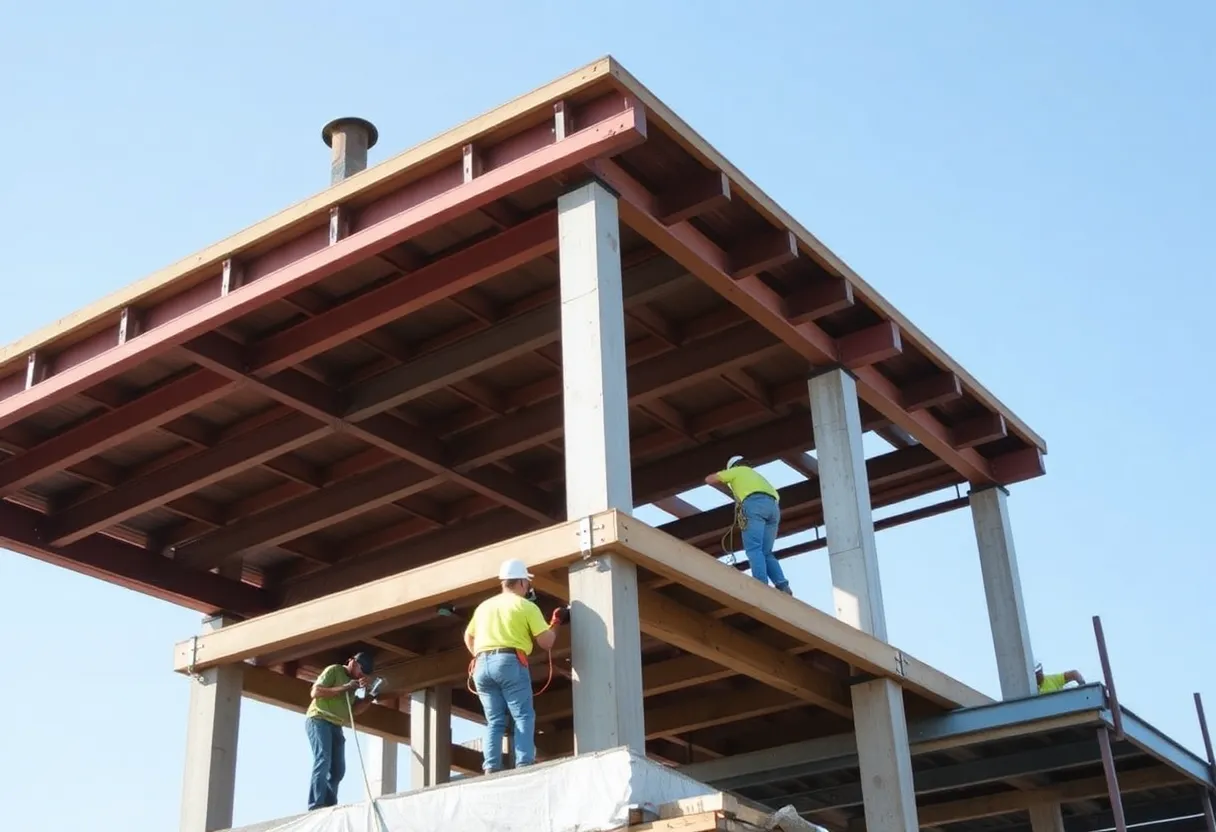United States, September 19, 2025
News Summary
J.P. Morgan’s Commercial Real Estate Agency & Institutional Capital team received a Freddie Mac Targeted Affordable Housing (TAH) Optigo lender license, enabling new agency-backed long-term financing for affordable and conventional multifamily projects nationwide. The license broadens the firm’s lending toolkit and lets it combine agency pathways with institutional capital for acquisitions, refinances, renovations, construction and permanent loans. The firm reports deploying over $6 billion to create or preserve more than 45,000 affordable units and emphasizes data-driven site selection, subsidy stacking, and tailored capital structures to support developers and preserve housing stock.
J.P. Morgan Gains Freddie Mac TAH Optigo Lender License, Expands Multifamily Financing
Top line
J.P. Morgan’s Commercial Real Estate Agency & Institutional Capital team has received a Freddie Mac Targeted Affordable Housing (TAH) Optigo lender license, creating new avenues for long-term financing of both affordable and conventional multifamily projects nationwide. The license broadens the firm’s lender toolkit and strengthens its ability to pair capital with project plans for acquisitions, refinances, renovations, construction financing and permanent loans.
What this enables
The new license positions the firm to offer a wider suite of agency-backed solutions in combination with its institutional capital platform. That setup allows more tailored financing structures for developers and investors focused on creating and preserving affordable housing, and supports a range of loan types and innovative structures designed to meet local needs.
Firm priorities and recent activity
Expanding the affordable housing stock is a firmwide priority and one of the metrics the team uses to measure its commercial real estate impact. The firm reports deploying more than $6 billion in debt and equity last year to create or preserve over 45,000 affordable housing and rental units across the country. Since 2022 the agency lending business has more than doubled, and the firm has held a Freddie Mac conventional license since 2022. The firm also serves as a Fannie Mae Delegated Underwriting and Servicing lender, allowing it to offer multiple agency pathways.
Why the license matters to developers
Access to the TAH Optigo program can reduce friction in closing agency-backed loans and provide more consistency in underwriting and servicing. Combining agency options with institutional capital gives clients choices in how to finance projects, improves access to long-term fixed-rate debt, and helps navigate the complex layering of subsidies and tax credits that many affordable projects require.
Market context: costs, competitiveness and federal support
Recent industry research highlights several headwinds for affordable housing development. Construction and financing costs have risen, many jurisdictions impose additional regulatory standards that can increase expenses, and soft costs are growing as projects layer grants, subsidies and legal work. At the same time, a federal tax bill enacted this year permanently increases Low-Income Housing Tax Credit funding by 12 percent and extends and updates the Opportunity Zone program, providing more incentives to build in low-income areas.
Where to build and why submarket choice matters
Data-driven site selection is critical. Analysis across a national multifamily database covering roughly 120,000 properties shows large variation in how much market-rate and fully affordable units compete for the same renters. In some metros market-rate rents are rarely competitive with fully affordable rents, while in others advertised market-rate rents fall within a range that attracts the same income groups. A useful planning rule of thumb is that market-rate properties are likely to draw tenants away from affordable units when rents are within about 10 percent of fully affordable rents.
Examples and indicators
Certain metros show limited competition between market-rate and affordable properties, while others show high overlap. Factors that influence competitiveness include absolute rent levels, recent new supply, and the age and composition of the multifamily stock. Occupancy rates for affordable properties tend to be higher where market-rate rents are less competitive.
Implications for community impact
By combining agency lending options with institutional capital, lenders can more effectively support projects that preserve existing affordable units or add new ones. That capability matters as millions of renters remain cost-burdened and as developers and public officials work to direct public dollars where they will build the most units and deliver the greatest community benefit.
What’s next
The license expands the tools available to lenders and borrowers. Developers and investors evaluating affordable deals should weigh submarket competitiveness, the stacking of subsidies, and construction and financing cost trends when underwriting projects. Lenders with multiple agency pathways are better positioned to tailor financing solutions that align capital structure with project goals.
Frequently Asked Questions
What is the Freddie Mac Targeted Affordable Housing Optigo lender license?
The license allows approved lenders to originate Freddie Mac loans targeted at affordable multifamily housing under the Optigo program, enabling agency-backed financing for acquisitions, refinances, renovations and construction-related products.
Who benefits from the new license?
Developers, owners and investors of affordable and conventional multifamily properties benefit through increased access to agency capital, a broader set of loan products, and the ability to pair agency financing with institutional capital to meet project needs.
How does the license change financing options?
It expands long-term financing choices by adding agency-backed pathways for affordable deals, and supports combining those options with balance-sheet and capital markets solutions for customized debt structures.
What should developers consider when choosing where to build affordable housing?
Developers should analyze submarket demand, competition from market-rate properties, recent supply growth, the age of local housing stock, and the cost and availability of subsidies and tax credits to make public dollars go further.
How does recent federal action affect affordable housing financing?
Recent federal legislation increases Low-Income Housing Tax Credit funding and extends Opportunity Zone incentives, which can improve project economics and attract more investment into affordable housing developments.
{
“@context”: “https://schema.org”,
“@type”: “FAQPage”,
“mainEntity”: [
{
“@type”: “Question”,
“name”: “What is the Freddie Mac Targeted Affordable Housing Optigo lender license?”,
“acceptedAnswer”: {
“@type”: “Answer”,
“text”: “The license allows approved lenders to originate Freddie Mac loans targeted at affordable multifamily housing under the Optigo program, enabling agency-backed financing for acquisitions, refinances, renovations and construction-related products.”
}
},
{
“@type”: “Question”,
“name”: “Who benefits from the new license?”,
“acceptedAnswer”: {
“@type”: “Answer”,
“text”: “Developers, owners and investors of affordable and conventional multifamily properties benefit through increased access to agency capital, a broader set of loan products, and the ability to pair agency financing with institutional capital to meet project needs.”
}
},
{
“@type”: “Question”,
“name”: “How does the license change financing options?”,
“acceptedAnswer”: {
“@type”: “Answer”,
“text”: “It expands long-term financing choices by adding agency-backed pathways for affordable deals, and supports combining those options with balance-sheet and capital markets solutions for customized debt structures.”
}
},
{
“@type”: “Question”,
“name”: “What should developers consider when choosing where to build affordable housing?”,
“acceptedAnswer”: {
“@type”: “Answer”,
“text”: “Developers should analyze submarket demand, competition from market-rate properties, recent supply growth, the age of local housing stock, and the cost and availability of subsidies and tax credits to make public dollars go further.”
}
},
{
“@type”: “Question”,
“name”: “How does recent federal action affect affordable housing financing?”,
“acceptedAnswer”: {
“@type”: “Answer”,
“text”: “Recent federal legislation increases Low-Income Housing Tax Credit funding and extends Opportunity Zone incentives, which can improve project economics and attract more investment into affordable housing developments.”
}
}
]
}
Key features at a glance
| Feature | Details |
|---|---|
| New license | Freddie Mac Targeted Affordable Housing Optigo lender license for agency-backed multifamily lending |
| Financing types | Permanent loans, construction financing, refinances, renovations, and innovative capital structures |
| Agency relationships | Adds to existing agency channels, complements Fannie Mae Delegated Underwriting and Servicing capability |
| Recent deployment | Over $6 billion in debt and equity deployed to create or preserve more than 45,000 affordable units |
| Market signals | Rising costs and complex subsidy layering increase need for data-driven site selection |
| Federal support | Permanent 12% increase in LIHTC funding and extended Opportunity Zone incentives |
| Developer guidance | Prioritize submarkets with strong demand and limited competition from market-rate units; use data to underwrite submarket-level risks |
Deeper Dive: News & Info About This Topic
Additional Resources
- Idaho Capital Sun: U.S. Sen. Crapo’s Proposed Road to Housing Act Can Help Idaho’s Housing Challenges
- Wikipedia: United States housing policy
- Governing: Affordable housing out of reach for half of all U.S. workers
- Google Search: Affordable housing U.S. workers
- Fox Business: More affordable housing market horizon
- Google Scholar: affordable housing market
- Multifamily Dive: Affordable housing development demand (Yardi Matrix)
- Encyclopedia Britannica: Affordable housing
- McKinsey: Mapping the US affordable housing crisis and unlocking opportunities for economic mobility
- Google News: affordable housing crisis United States
Author: Construction FL News
The FLORIDA STAFF WRITER represents the experienced team at constructionflnews.com, your go-to source for actionable local news and information in Florida and beyond. Specializing in "news you can use," we cover essential topics like product reviews for personal and business needs, local business directories, politics, real estate trends, neighborhood insights, and state news affecting the area—with deep expertise drawn from years of dedicated reporting and strong community input, including local press releases and business updates. We deliver top reporting on high-value events such as the Florida Build Expo, major infrastructure projects, and advancements in construction technology showcases. Our coverage extends to key organizations like the Associated Builders and Contractors of Florida and the Florida Home Builders Association, plus leading businesses in construction and legal services that power the local economy such as CMiC Global and Shutts & Bowen LLP. As part of the broader network, including constructioncanews.com, constructionnynews.com, and constructiontxnews.com, we provide comprehensive, credible insights into the dynamic construction landscape across multiple states.





